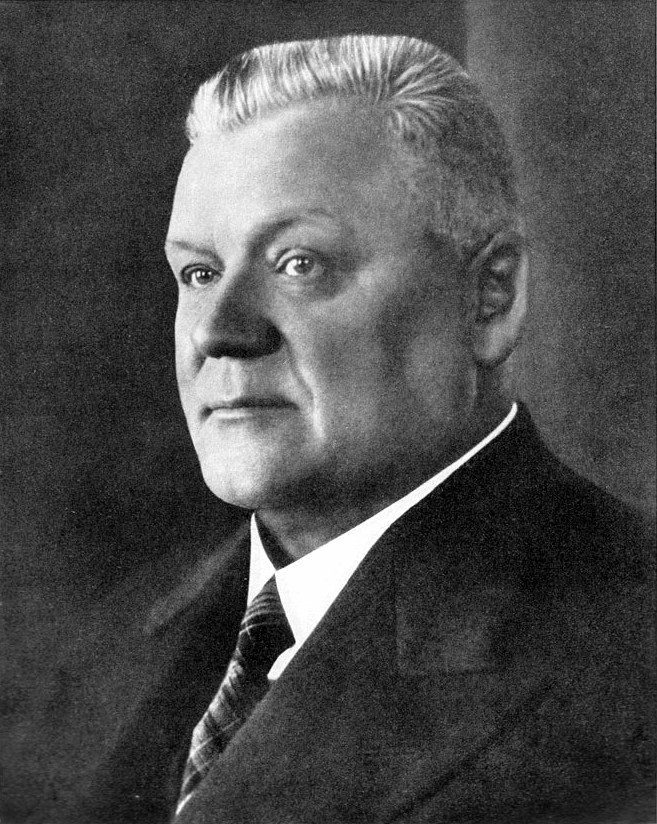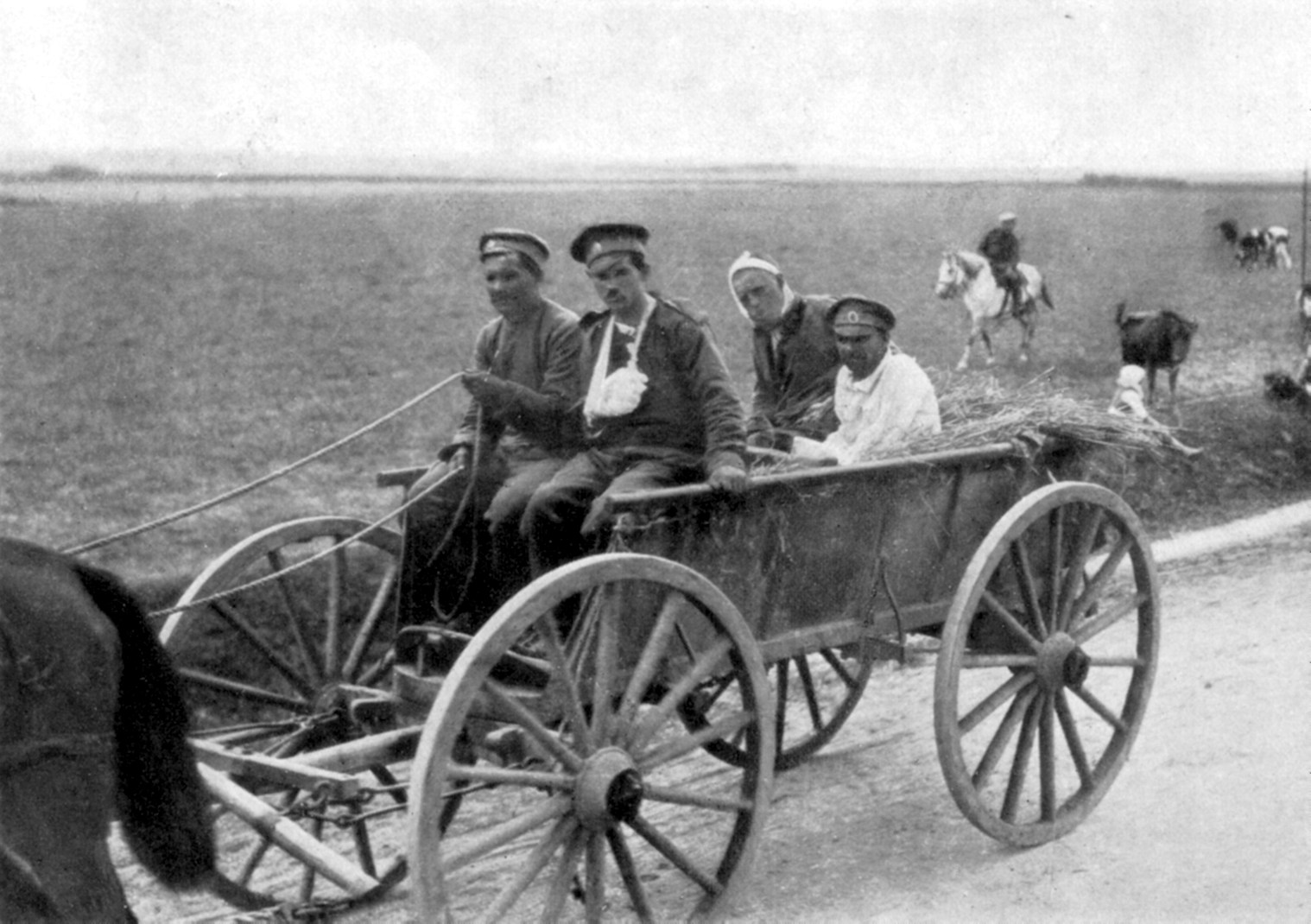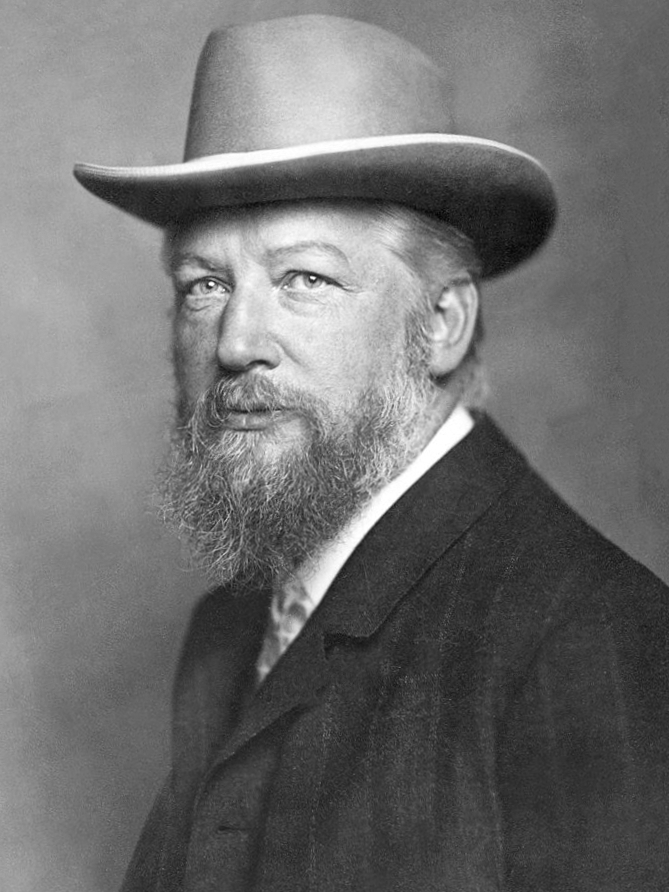|
Zigfrīds Anna Meierovics
Zigfrīds Anna Meierovics (, Durbe – 22 August 1925, near Tukums) was a Latvian politician and diplomat who served as the first Foreign Minister of Latvia from its independence until 1924 and again from December of the same year until his death. He also served two terms as the Prime Minister of Latvia from June, 1921 to January, 1923 and from June 1923 to January, 1924. He was one of the founders of the Latvian Farmers' Union, one of Latvia's oldest political parties. Early life Meierovics was born into the family of a Jewish doctor and his Latvian wife Anna, who died in childbirth. His father became mentally ill and therefore young Meierovics grew up with his uncle's family in Sabile. He studied at the Riga Polytechnicum. Career After 1911 Meierovics belonged to various Latvian organizations, notably the Riga Latvian Society. During World War I he worked in the Latvian Refugee Committee and the organizing committee of the Latvian Riflemen units. After the February ... [...More Info...] [...Related Items...] OR: [Wikipedia] [Google] [Baidu] |
Prime Minister Of Latvia
The prime minister of Latvia () is the most powerful member of the Government of Latvia, who presides over the Latvian Cabinet of Ministers. The officeholder is nominated by the president of Latvia, but must be able to obtain the support of a parliamentary majority in the Saeima The Saeima () is the parliament of the Latvia, Republic of Latvia. It is a unicameral parliament consisting of 100 members who are elected by proportional representation, with seats allocated to political parties which gain at least 5% of the p .... The tables below display all Latvian prime ministers from both the first period of Latvian independence (1918–1940) and since the country regained its independence (1990–present). From 1990 to 6 July 1993, the head of government was known as the chairman of the Council of Ministers. A direct translation of the official Latvian term is minister-president. Although the equivalent is used in some European languages, it is not used conventionally in En ... [...More Info...] [...Related Items...] OR: [Wikipedia] [Google] [Baidu] |
Tukums
Tukums (; ; ) is a town in Latvia and serves as the administrative center of Tukums Municipality. It is located in the eastern part of the historical region of Courland, and with more than 16,000 inhabitants Tukums is the 13th largest settlement in Latvia. It is also an important railroad junction, connecting the town with Riga, Jelgava and Ventspils. It has two railway stations — Tukums I and Tukums II. History The historical center of Tukums developed between trade routes leading from the mouth of the Daugava River to Prussia. The oldest part is today's Talsi Street that originated at the river named Zvirgzdupite where there used to be a castle mound with a wooden castle. From 1253 Tukums was ruled by the Livonian Order. A masonry castle was built on the bank of the Slocene river at the end of the 13th century. The castle was surrounded by settlements of German tradesmen and craftsmen. A marketplace was formed in front of the castle and some new streets appear ... [...More Info...] [...Related Items...] OR: [Wikipedia] [Google] [Baidu] |
Tautas Padome
The People's Council of Latvia (, LTP) was a temporary council which declared Latvia's independence on November 18, 1918 and then acted as the temporary parliament of the country until a Constitutional Assembly was elected. The People's Council was formed on November 17, 1918 as a result of merging two councils of Latvian organizations: Latvian Provisional National Council ('','' LPNP) and the Democratic Bloc. Originally, the People's Council had 40 members representing all the major Latvian political organizations, except the far right and the far left (communists). It was later expanded to 245 representatives. On November 18, 1918, the People's Council declared Latvia an independent country at the now National Theatre of Latvia. It chose Jānis Čakste as the President of the Council and Kārlis Ulmanis as the Prime Minister A prime minister or chief of cabinet is the head of the cabinet and the leader of the ministers in the executive branch of government, often in ... [...More Info...] [...Related Items...] OR: [Wikipedia] [Google] [Baidu] |
Latvian Provisional National Council
Latvian Provisional National Council (, LPNP) was a political organization established on November 29, 1917 (November 16 in the Julian calendar) in Valka, Governorate of Livonia by the Latvian Refugee Support Central Committee, Latvian political parties and representatives from the Provisional Land Council of Vidzeme and the Provisional Land Council of Latgale. Due to German army advances, the National Council also met in Petrograd, in secrecy from the new Bolshevik regime. Creation On October 14–17, 1917, Latvian organizations and politicians met in Petrograd and agreed to create a Council that would include 3 representatives from Vidzeme, 3 from Latgale, 3 from Kurzeme, 2 from the Refugee Support Central Committee, 1 from the Baltic Refugee Organization, 2 from Iskolat, 2 from the Soldiers' Union, 1 from the Latvian Farmers' Union, 1 from left-wing parties and 1 from right-wing of the Latvian Social Democrats, as well as 1 from Eser, Radical Democrat and National Democrat p ... [...More Info...] [...Related Items...] OR: [Wikipedia] [Google] [Baidu] |
Congress Of The Peoples Of Russia
The Congress of the Enslaved Peoples of Russia was a congress of representatives of different nationalities to discuss their political situation in the Russian Empire. It was held on in Kyiv, Ukraine. History World War I and the February Revolution brought hopes that the various minorities in the Russian Empire could attain some freedoms. The congress was organized by the Ukrainian Central Rada to discuss these political aspirations and better coordinate their efforts. In total, there were 93 representatives of 20 nations, including Belarusians, Buryats, Georgians, Estonians, Jews, Lithuanians, Latvians, Crimean Tatars, Moldavians, Don Cossacks, and Cossacks. Polish and Finnish representatives did not participate as they had already proclaimed independence. The Russian Provisional Government was represented by Maksym Slavinsky, member of the Constitutional Democratic Party (Kadets). Latvians had ten representatives, including future Prime Minister Zigfrīds Anna Meierovics. Esto ... [...More Info...] [...Related Items...] OR: [Wikipedia] [Google] [Baidu] |
Riga
Riga ( ) is the capital, Primate city, primate, and List of cities and towns in Latvia, largest city of Latvia. Home to 591,882 inhabitants (as of 2025), the city accounts for a third of Latvia's total population. The population of Riga Planning Region, Riga metropolitan area, which stretches beyond the city limits, is estimated at 847,162 (as of 2025). The city lies on the Gulf of Riga at the mouth of the Daugava (river), Daugava river where it meets the Baltic Sea. Riga's territory covers and lies above sea level on a flat and sandy plain. Riga was founded in 1201, and is a former Hanseatic League member. Riga's historical centre is a UNESCO World Heritage Site, noted for its Art Nouveau/Jugendstil architecture and 19th century wooden architecture. Riga was the European Capital of Culture in 2014, along with Umeå in Sweden. Riga hosted the 2006 Riga summit, 2006 NATO Summit, the Eurovision Song Contest 2003, the 2013 World Women's Curling Championship, and the 2006 IIHF Wo ... [...More Info...] [...Related Items...] OR: [Wikipedia] [Google] [Baidu] |
February Revolution
The February Revolution (), known in Soviet historiography as the February Bourgeois Democratic Revolution and sometimes as the March Revolution or February Coup was the first of Russian Revolution, two revolutions which took place in Russia in 1917. The main events of the revolution took place in and near Petrograd (now Saint Petersburg), the then-capital of Russia, where long-standing discontent with the monarchy erupted into mass protests against food rationing on 23 February Old Style and New Style dates, Old Style (8 March Old Style and New Style dates, New Style). Revolutionary activity lasted about eight days, involving mass demonstrations and violent armed clashes with police and Special Corps of Gendarmes, gendarmes, the last loyal forces of the Russian monarchy. On 27 February O.S. (12 March N.S.), most of the forces of the capital's garrison sided with the revolutionaries. In the same day, the Russian Provisional Government, made up by left-leaning State Duma (Russ ... [...More Info...] [...Related Items...] OR: [Wikipedia] [Google] [Baidu] |
Latvian Riflemen
The Latvian Riflemen (; ) were originally a military formation of the Imperial Russian Army assembled starting 1915 in Latvia in order to defend Baltic governorates against the German Empire in World War I. Initially, the battalions were formed by volunteers, and from 1916 by conscription among the Latvian population. A total of about 40,000 troops were drafted into the Latvian Riflemen Division. They were used as an elite force in the Imperial and Red armies. Background Towards the end of the 19th century, Riga, the future capital of Latvia, became one of the most industrialized cities in the Russian Empire. The Latvian Social Democratic Workers' Party (LSDRP) was well organized and its leading elements were increasingly sympathetic to the Bolsheviks by the time of the 1905 Revolution. When punitive expeditions were mounted by the state following this, armed resistance groups - often affiliated to the LSDRP - were set up to conduct guerilla warfare against the Tsarist reg ... [...More Info...] [...Related Items...] OR: [Wikipedia] [Google] [Baidu] |
World War I
World War I or the First World War (28 July 1914 – 11 November 1918), also known as the Great War, was a World war, global conflict between two coalitions: the Allies of World War I, Allies (or Entente) and the Central Powers. Fighting took place mainly in European theatre of World War I, Europe and the Middle Eastern theatre of World War I, Middle East, as well as in parts of African theatre of World War I, Africa and the Asian and Pacific theatre of World War I, Asia-Pacific, and in Europe was characterised by trench warfare; the widespread use of Artillery of World War I, artillery, machine guns, and Chemical weapons in World War I, chemical weapons (gas); and the introductions of Tanks in World War I, tanks and Aviation in World War I, aircraft. World War I was one of the List of wars by death toll, deadliest conflicts in history, resulting in an estimated World War I casualties, 10 million military dead and more than 20 million wounded, plus some 10 million civilian de ... [...More Info...] [...Related Items...] OR: [Wikipedia] [Google] [Baidu] |
Riga Technical University
Riga Technical University (RTU) () is the oldest technical university in the Baltic countries established on October 14, 1862. It is located in Riga, Latvia and was previously known as Riga Polytechnical Institute and Riga Polytechnicum. In 1958, the Riga Polytechnic Institute was established as a separate institution, separating the departments of engineering from the Latvian State University. Over the years, the Riga Polytechnic Institute evolved and expanded its academic offerings, becoming one of the leading technical universities in the region. In 1990, it was renamed Riga Technical University (RTU), and today, it has nine faculties and is the largest STEM-oriented university in Latvia. In the 2022 QS EECA university rankings, RTU was ranked 57th among the universities in Eastern Europe and Central Asia. History Riga Polytechnical Institute (1862–1918) Riga Polytechnicum was first established in 1862 and was the first polytechnical institute in Imperial Russia. It o ... [...More Info...] [...Related Items...] OR: [Wikipedia] [Google] [Baidu] |
Sabile
Sabile (; ) is a town in Talsi Municipality, in the Courland region of Latvia. Sabile was first mentioned in chronicles in 1253. From the 14th century to the 16th century, it was a site of a castle of the Livonian Order and a village near the castle. Sabile became a town in 1917. The Sabile Wine hill ('' Sabiles Vīna Kalns'') used to be the most northern open-air vineyard in the world, registered in the Guinness Book of Records. The winemaking tradition in Sabile dates back to the 16th century. For the first time, wine production was created here during Livonia (14th century), and the hill was completely restored in 1936 during by the mayor Osvalds Rezebergs. The Sabile Castle Mound, which was the center of the district from the 10th century to the 13th century, overlooks Sabile and the valley of the Abava River. File:SabileBaznica.JPG, Sabile Lutheran church File:Sabile weinberg.jpg, Sabile wineyard File:SabileTalsuiela.JPG, Talsu street in Sabile File:Sabiles sinagoga 2005 06 ... [...More Info...] [...Related Items...] OR: [Wikipedia] [Google] [Baidu] |





